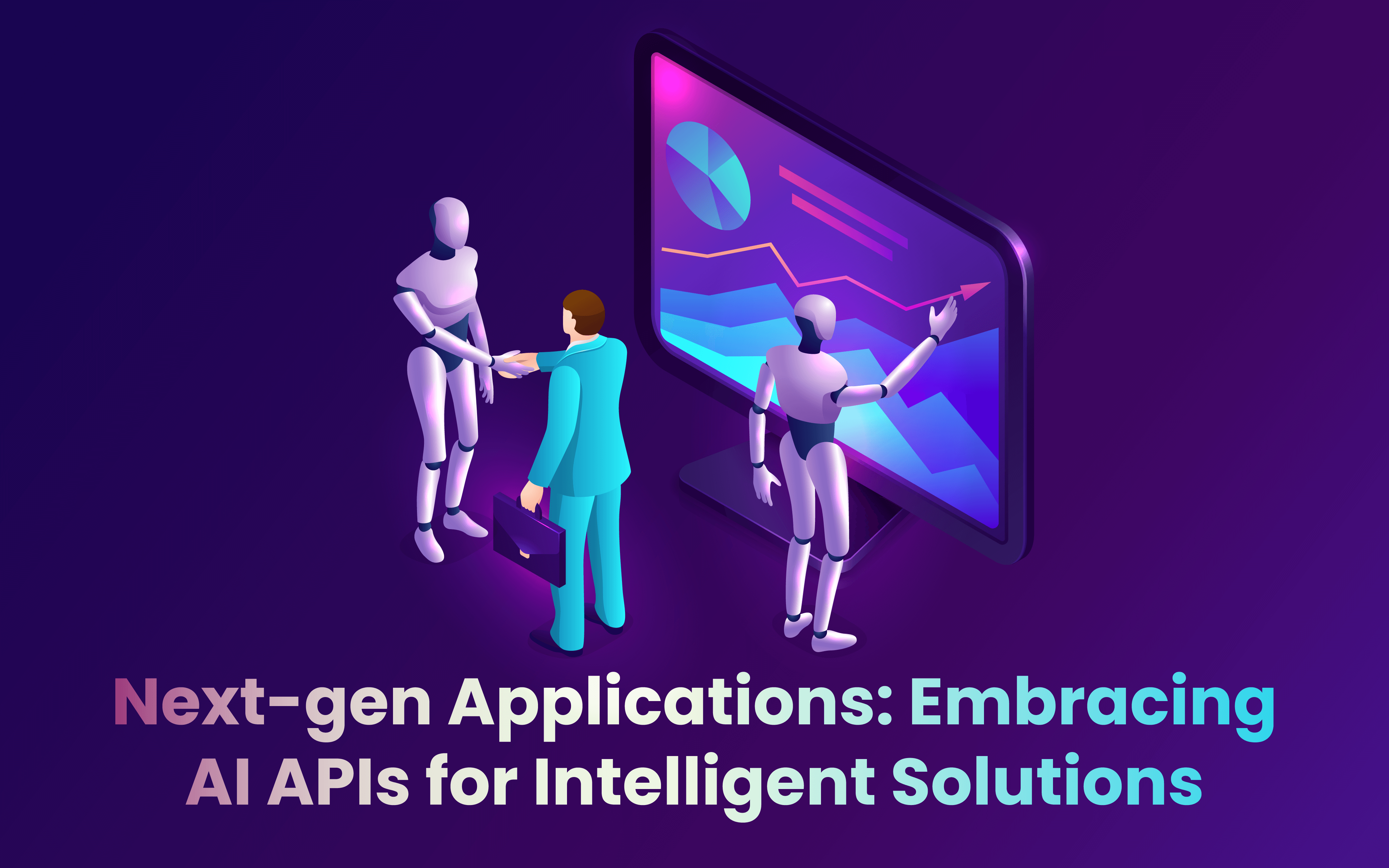Blogs
To know about all things Digitisation and Innovation read our blogs here.
Digital Transformation
Successful Digital Transformation Strategies Focus on People, Not Technology
SID Global Solutions
19 January 2023

Digital transformation is the process of using technology to fundamentally change the way an organization operates and delivers value to its customers. While technology is certainly a critical component of digital transformation, it is important to remember that the ultimate goal is to improve the way people work and serve customers. One key strategy for successful digital transformation is to focus on the people who will be using the technology. This means involving them in the design and implementation process, and ensuring that the technology is intuitive and easy to use. By involving people in the process, you can ensure that the technology is tailored to their needs and that they will be more likely to adopt and use it effectively.
Also Read: Steps to Successfully Implement Digital Transformation
Here are a few strategies for focusing on people in digital transformation:
Involve employees in the process: Employees are the ones who will be using the new technology, so it is important to involve them in the planning and implementation stages. This can help to ensure that the technology is user-friendly and meets the needs of the people who will be using it. Involving employees in the digital transformation stages by way of:
- Communicating the vision and goals of the digital transformation to all employees, and involving them in the planning process: This will help them understand the reasoning behind the changes and feel more invested in the success of the project.
- Encourage employee feedback and ideas: Allow employees to share their thoughts and suggestions on how the company can improve its digital capabilities.
- Provide training and development opportunities: To help employees adapt to new technologies and processes. This will ensure they have the necessary skills to perform their roles effectively in the new digital environment.
- Set up cross-functional teams to work on digital projects: This will enable employees from different departments to collaborate and share their knowledge and experience.
- Recognize and reward employees for their contributions to the digital transformation: This will encourage them to continue to engage and drive the process forward.
- Create a culture of experimentation and innovation: Encourage employees to test new ideas and approaches, and provide them with the resources they need to do so.
- Regularly communicate progress and results to employees: This will help keep them informed and engaged in the digital transformation process.
- Establish a digital governance framework: To ensure all employees understand their roles and responsibilities in the digital transformation process.
Also Read: How Digital Transformation Looks Like In 2023
Communicate with customers: Digital transformation can also affect customers, so it is important to communicate with them and gather feedback throughout the process. This can help to ensure that the technology meets their needs and is easy for them to use. Some of the important aspects that need consideration on how to communicate with customers:
- Clearly define your digital transformation goals: Before communicating with customers, it is important to have a clear understanding of what your digital transformation goals are and how they align with your overall business objectives. This will help ensure that your customers understand the benefits of the changes you are making and why they are important.
- Communicate early and often: Keep your customers informed of your digital transformation progress by communicating with them early and often. This includes sharing updates on your progress, timelines, and any changes that may affect them.
- Be transparent: Be open and transparent with your customers about any potential challenges or obstacles that may arise during the digital transformation process. This will help build trust and understanding, and ensure that your customers are prepared for any potential changes.
- Listen to feedback: Encourage customers to provide feedback on their experience with your digital transformation efforts. This will help you identify areas for improvement and make any necessary adjustments.
- Provide training and support: Provide customers with the training and support they need to fully utilize the new digital tools and systems that are being implemented. This may include webinars, training sessions, or on-demand support resources.
- Continuously evaluate and improve: Continuously evaluate and improve your digital transformation strategy based on customer feedback and results. This will help ensure that your digital transformation efforts are meeting the needs of your customers and delivering the desired results.
Also Read: Why Digital Transformation is Unignorable?
Empower employees to be innovative: Encourage employees to think creatively and propose new ideas for how technology can be used to improve their work. Empowering employees to innovate can help to create a culture of continuous improvement and foster a more agile organization. Few integral points that’s needed to be taken care of while empowering employees to be innovative:
- Encourage employee participation: Encourage employees to contribute their ideas and suggestions on how to improve processes and implement digital solutions. This will create a sense of ownership and engagement in the digital transformation process.
- Provide training and resources: Provide employees with the necessary training and resources to become proficient in the use of new digital technologies. This will enable them to innovate and come up with new ideas to improve processes and increase efficiency.
- Create a culture of innovation: Create a culture of innovation by recognizing and rewarding employees who come up with innovative ideas and solutions. This will inspire others to think creatively and come up with new ideas.
- Encourage experimentation: Encourage employees to experiment with new technologies and processes. This will allow them to identify opportunities for improvement and come up with innovative solutions.
- Foster collaboration: Foster collaboration among employees to promote the sharing of ideas and knowledge. This will increase the chances of identifying new opportunities for digital transformation.
- Allow for failure: Allow for failure and encourage employees to take risks. This will foster a culture of experimentation and innovation, and ultimately lead to the successful implementation of digital transformation strategies.
Also Read: Digital Transformation Capabilities for future ready businesses
Provide training and support: New technology can be intimidating for employees, so it is important to provide training and support to help them become comfortable with it. This can help to ensure that employees are able to use the technology effectively, which in turn can help to ensure the success of the digital transformation. The core ideas that needs a clear understanding while providing training and support to employees:
- Identify the goals and objectives of the digital transformation: The first step in any successful digital transformation strategy is to clearly define the goals and objectives of the transformation. This will help to ensure that everyone is on the same page and that the strategy is aligned with the overall business objectives.
- Develop a comprehensive plan: Once the goals and objectives have been defined, a comprehensive plan should be developed that outlines the steps that need to be taken to achieve them. This plan should include timelines, milestones, and key performance indicators (KPIs) to measure progress.
- Build a cross-functional team: A digital transformation strategy requires the participation of multiple departments and stakeholders, so it is important to build a cross-functional team that includes representatives from IT, operations, marketing, and other key areas.
- Provide training and support: To ensure that the digital transformation strategy is successful, it is essential to provide training and support to all stakeholders. This can include workshops, webinars, training sessions, and ongoing support to help employees adapt to new processes and technologies.
- Measure and track progress: Regularly measuring and tracking progress is crucial to ensure that the digital transformation strategy is on track and that adjustments can be made as needed. This can be done through regular reviews of KPIs and other metrics, as well as through feedback from employees and stakeholders.
- Communicate effectively: Communication is key to the success of any digital transformation strategy. It is important to keep all stakeholders informed of progress, challenges, and successes throughout the process, and to be transparent about any changes or delays that may occur.
- Continuously monitor and adapt: The digital landscape is constantly changing, so it is important to continuously monitor and adapt the strategy as needed. This can include staying up-to-date on the latest technologies and trends, and making adjustments to the strategy as needed to ensure it remains aligned with the overall business objectives.
In summary, digital transformation is a complex process that requires a holistic approach. By focusing on people, organizations can ensure that the technology they implement meets the needs of employees, customers, and other stakeholders and that they are able to effectively adopt and use it. While technology is a critical component of digital transformation, it is important to remember that the ultimate goal is to improve the way people work and serve customers. The key to success is to focus on people, ensure that the technology is integrated into the organization’s overall business strategy, have the necessary infrastructure and resources in place, and create a culture that is open to change.
Get in touch with us to know how to truly drive digital transformation success by putting people at the forefront and learn how to align business goals with digital initiatives, foster a culture of innovation, and empower your workforce for long-term success.









